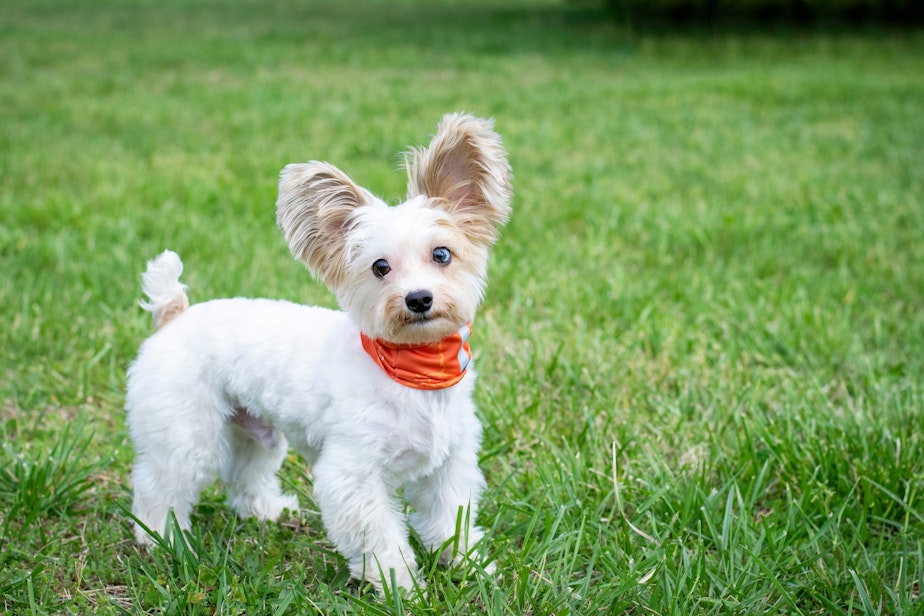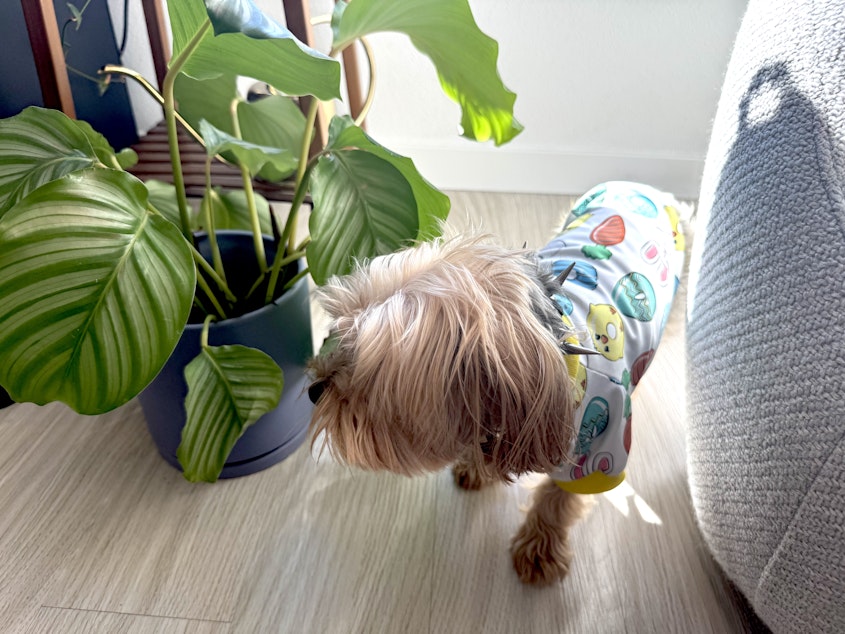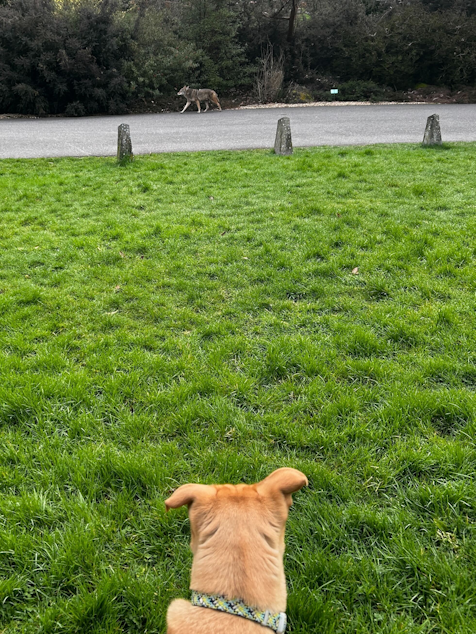6 tips for keeping your pets safe from wildlife attacks

Coyotes and birds of prey are basically everywhere in Seattle. Experts say they’re part of the city — and they're here to stay. So how can pet owners keep their cats and dogs safe?
Here are some tips from people who know the predators best.
1. Keep a close eye on your pets when they’re outside.
Don’t leave your animals outside at night, said Dr. Mark Jordan, associate professor of biology at Seattle University and a co-director of the Seattle Urban Carnivore Project. He said he never lets his cats outside because he knows there are coyotes in the neighborhood. Cats are more likely to be killed by cars than coyotes, he said, but it’s just too risky to let your pet wander out alone.
You should also stay with your dog when you let them outside to potty, and keep them leashed during walks. This prevents large dogs from chasing after coyotes and helps small-dog owners reel in their pets when they see a predator.
Sponsored
Raptors like hawks, owls, and eagles can also be a potential threat to cats and small dogs, though Jordan said the risk is lower. That said, he doesn't let his cats follow him outside at dusk because of owls and a red-tailed hawk in the greenbelt behind his house. He tells them they have to stay inside because it’s “raptor time.”
Michelle Werner, owner of Trails And Tails Dog Walking in Seattle, said she and her employees "never use closed ear headphones and we always have hands-free phones so you’re always able to look around.” Werner added that “it's really important if you do see a coyote, you're never turning away from the coyote. You always want to be sure that you have your eyes on them."
2. Don’t be a source of food.
Coyotes are hungry predators that usually eat bunnies, rodents, and fruit. But they won’t say no to an unattended picnic or open trash can smelling of food.
Sam Kreling, who recently earned a doctorate studying urban coyotes at the University of Washington, said the canines aren’t really interested in people or pets, but they can sometimes associate us with food or trash.
Sponsored
RELATED: Coyotes are here to stay in Seattle's urban core. So how can we coexist?
If a coyote is hanging around your neighborhood, it’s likely because they got food there at some point. Talk to your neighbors and don’t leave any food around.
Dog walker Michelle Werner said one big challenge is that in some parks, people leave food or treats out for wild animals, which of course attracts more coyotes to the spot. Coyotes are hunters and should not be fed by humans, Kreling and Jordan both said.

3. Haze ‘em! …humanely.
When you see a coyote, maintain a healthy distance. Stay away and no getting close for a selfie.
“Chances are it's not going to approach you and would rather be left alone as much as you might want to be left alone by it,” Jordan said.
You can also practice “humane hazing,” a common technique for scaring away wild animals. Here’s what you do: Get big, make noise, and be scary. Waive your arms, shout at the coyote, clap your hands, jingle your car keys. Maybe carry a whistle or air horn if you’re really worried about meeting one face-to-face.
“What you want to indicate is that they should be spending more time in the green space, and not where you're walking your dog,” Jordan said.
In essence, you’re teaching the coyote that your street or neighborhood is not safe for them and they should go back to the park or green space they live in.
Sponsored
Werner recommends carrying an umbrella you can use to appear even bigger to a coyote.
Some people throw objects in the direction of coyotes to shoo them away, but researchers say there’s really no need to potentially hit or injure the animal.
When it comes to bear or pepper spray, Jordan advised against using it in urban areas, saying, "you run a high risk of injuring yourself or others compared to if you were on a trail.”
Instead, he recommends only using a protective spray if you are highly confident in how to use it and no one else is around.
Protective pet gear is also an option for your beloved pooch if you're worried about a predator attack. There are spiked vests and collars designed to deter or slow a coyote or raptor if they go in for a bite. People in Seattle with very small dogs especially might consider this added layer of defense.
Sponsored

4. Plan your dog walks around predators' schedules
Coyotes and birds of prey often hunt at night, and are typically spotted during the hour before sunset and the hour after sunrise. Try to plan walks outside of those windows.
Werner said pet owners should also be aware that interest may be mutual between their furry friends and any wildlife.
“I have found that most dogs are shockingly interested in the coyotes,” she said. “Most react to them almost like they react to cats. They seem to notice the coyotes very quickly.”
Sponsored

It's also advisable to walk your pets with a group, if possible.
5. Remember that coyotes are not always on the attack — they’re just trying to survive in the big city like us
Jordan said during this time of year especially, many coyotes are having pups and protecting the dens where they sleep.
"They're going to be pretty protective of their pups, the same way we would be protective of our kids,” he said. “So they might engage in a behavior we call escorting, where they'll kind of follow you at a safe distance and they're not really stalking you. What they're doing is basically keeping an eye on you and making sure that you are not getting any closer to their den than they feel comfortable with.”
Jordan said the coyote will eventually break off and head down an alley or back into the woods, and that means you've gotten far enough away from its den that it feels safe.
6. Report ‘em! To scientists, not the police.
When you see a coyote, you can report it on CarnivoreSpotter.org, an interactive map that shows all kinds of reported animal sightings in Seattle.
This data is very helpful for researchers like Jordan and Kreling, who say it provides insight into coyote habits, locations, behaviors, and triggers. Since it launched in 2019, Jordan said the website has received over 10,000 observations.
Trapping and relocating coyotes is almost impossible, so most pet control companies don’t bother. State wildlife officials will shoot coyotes, but only if they’re a real nuisance and biting people or domesticated animals.
Therefore, Seattle pet owners' best bet is to learn to live comfortably with our coyote neighbors.
For Jordan, that means “acknowledging and respecting wildlife [and] being excited by seeing these animals that are living here in our midst and making a go of it in this environment.”

